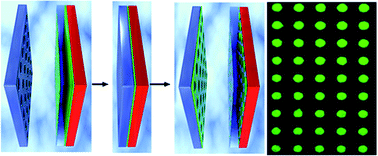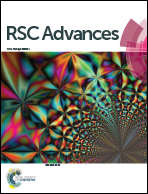Micro-contact printing of PEM thin films: effect of line tension and surface energies†
Abstract
Polyelectrolyte multilayer (PEM) thin films are popular candidates for surface coating due to their versatility, tunability and simple production method. Often these films are used in a 2D structured manner for creating defined cell scaffolds or electronic applications. Although these films were successfully printed in the past, the conditions and energies necessary for a successful printing were only investigated as isolated parameters or as a function of the substrate but not the PEM surface energy and therefore the dominating forces remained controversial. We hereby present a theory and method for microcontact printing of condensed polyelectrolyte multilayer thin films, based on surface energies and the line tension. The theory relies on the surface energy of the substrate, stamp and PEM as well as the PEM line tension ratios to create the desired pattern. The presented theory is able to predict the printability, quality and resolution limit of a chosen system and was evaluated with experiments. A reduction of the production time from the beginning of PEM assembly to the final pattern from several hours down to 30 minutes was achieved while increasing reproducibility and resolution of the printed patterns at the same time. We would like to point out that this approach can generally be used for any kind of adsorbed thin film on substrates.


 Please wait while we load your content...
Please wait while we load your content...